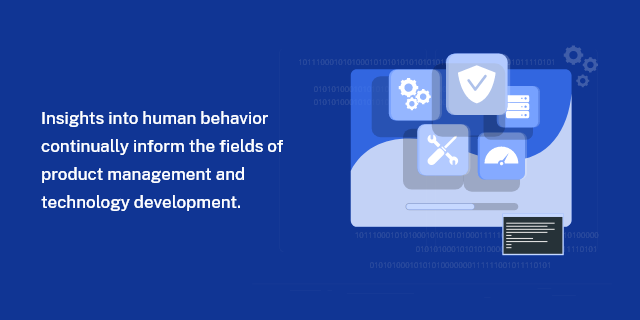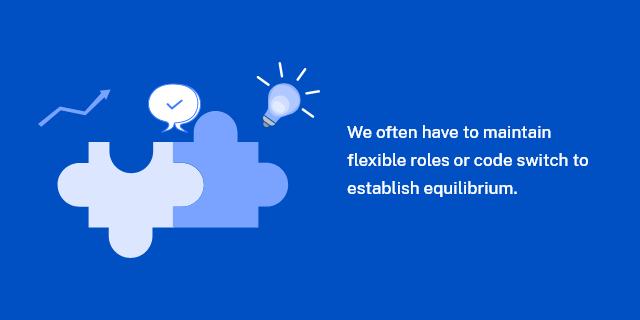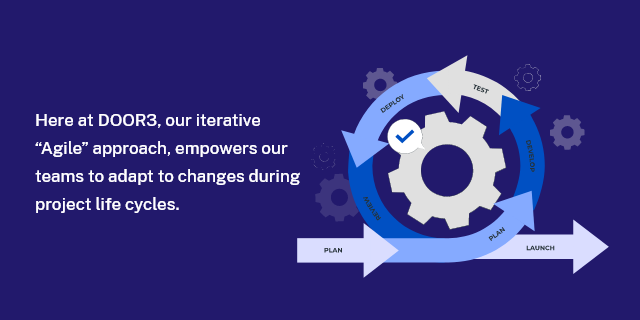Reflexivity in Practice: How Knowing Your “Whys” Helps You Work Better
01.28.2022Contrary to popular opinion, product development is a remarkably social enterprise. It’s filled with the same types of dynamic relationships between diverse groups of people that enrich our everyday lives. As such, the working relationships between clients, development shops, and users have to balance out differences in perceptions and expectations over time. Without even meaning to, our unconscious biases can unintentionally create cycles of miscommunication and misunderstanding. That’s where reflexivity, the practice of self-reflection and introspective decision-making, can help teams adapt and work more effectively across a range of approaches and markets. I find that keeping this social theory in mind helps my work at DOOR3 immensely.
Reflexivity is not merely grasping the immediate context in which communication takes place. It also includes understanding the social forces at play. For example, consider the differences between a wink and a twitch. We might not be able to discern which is which without the proper context, but what about the person doing the action? As the anthropologist Clifford Geertz explains, “The winker could not not know that he was winking; but the victim of the twitch might be quite unaware of his twitch. The winker can tell what he was trying to do; the twitcher will deny that he was trying to do anything.” In this way, gaining insight into communication requires us to reflect on our perceptions and behaviors in ways that are grounded in actual experiences.
Developing Reflexivity

Insights into human behavior continually inform the fields of product management and technology development. Software development, in particular, readily applies the understanding of how people use language and relate to semiotic representations in different contexts to improve computer-human interaction. Grounded approaches, like behavior-driven development, encourage teams to base their approaches on real-world examples in order to ensure their collaboration benefits from a shared understanding of project requirements. The value of establishing a common sense of purpose is that it fortifies team cohesion. Losing that shared language often derails teams, even those with longstanding, developed rapport and grounded decision-making.
For example, even in the most organized teams, simple choices can lead to unintended consequences down the road. Our assumptions can leave us blind to valuable information expressed by others, and we often overestimate our understanding to our own detriment. Furthermore, the natural biases underlying our decision-making often lead to intangible, yet very real costs such as technical debt later on, even with proper documentation. For instance, choosing the solution that seems the most easy and quick can work great … or it can doom future success if developers don’t consider the long-term ramifications of technology choices. Teams subsequently spend outsized effort to anticipate the behavior of those involved, in order to avoid the pitfalls that can degrade team cohesion. Reflexivity, here understood as the capacity for teams to reflect on and change their approach, enables us to achieve a shared vision throughout the process.
Learning to Ask Why

This reflexive turn helps us gain a more holistic understanding of our work, not because it challenges our beliefs, but because it motivates us to ask why we and others we are working with believe certain things and how this affects our practice. The difficulty lies in the fact that our most entrenched beliefs come from our most foundational identity. This affects teamwork, work roles, and levels of authority in melding different experiences and expectations. For example, managing client expectations requires different skills and thinking than successfully managing a team and collaboration between groups. We often have to maintain flexible roles or code switch to establish equilibrium. However, we often do not go a step further to consider how our own focus, perspective, and behavior affect our participation and reception in different contexts.
Contrary to what we may feel, we are not neutral judges of our own capabilities. This misconception is the root cause of many problems that arise when creative individuals collaborate. Just as we cannot expect to understand and anticipate how our clients will act or react, we cannot hope to rely on our own self-perception, especially when savvy clients are aware of our own biases. For example, if you are a .NET or a Java shop, clients will come into engagements with a preconceived idea of how your mindset will affect the requirements. Without reflexivity within and between teams, our strengths can become our weaknesses.

Here at DOOR3, our iterative “Agile” approach, empowers our teams to adapt to changes during project life cycles. As a result, our success depends on our ability to pivot intelligently, determining which new requirements to build and why. By engaging in reflexivity even before the work starts, we form a basic understanding of how we, as professionals, plan on approaching the project. Opening a dialogue about work before work may seem counterproductive, but as scholarship has shown, investing in these kinds of foundational exercises pays off, especially in high-sakes, complex, and dynamic situations.
Read more about this and other topics covered in our ongoing speaker series on team dynamics and collaboration here. Contact us for any queries.



